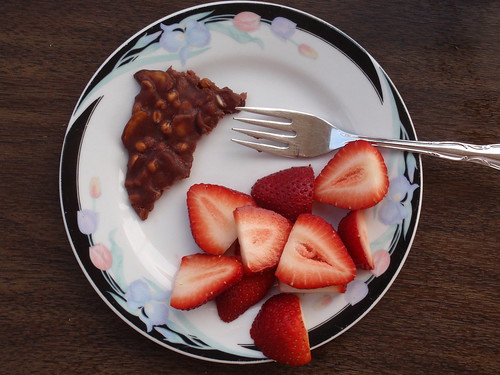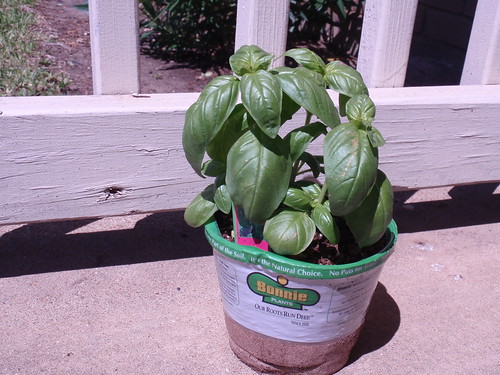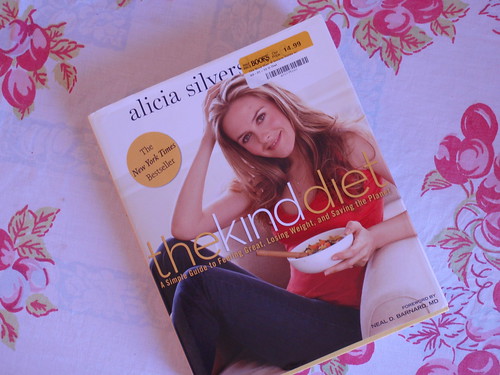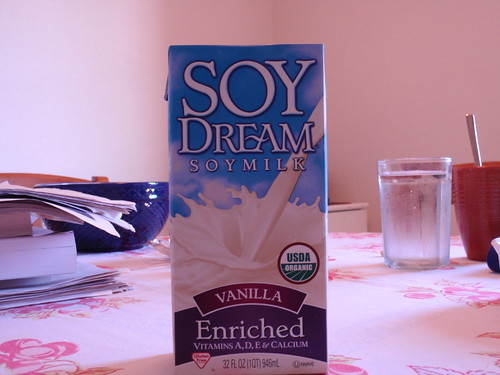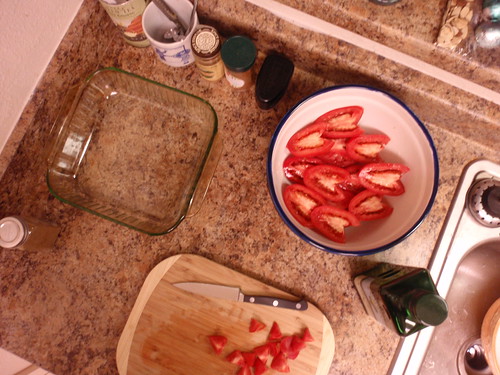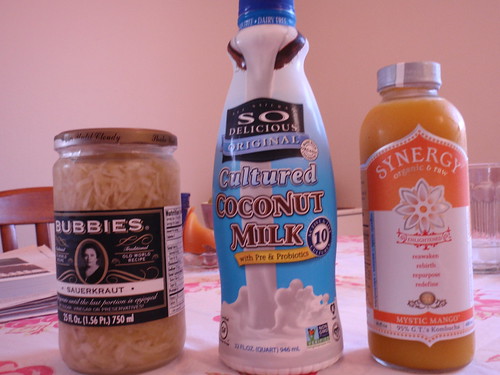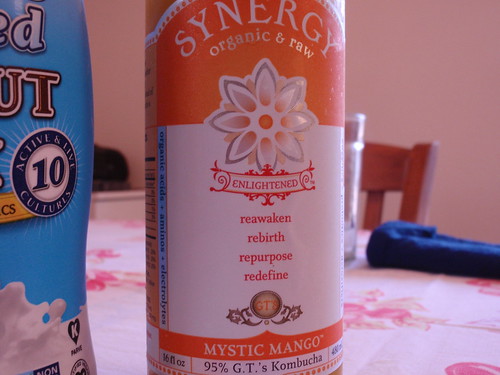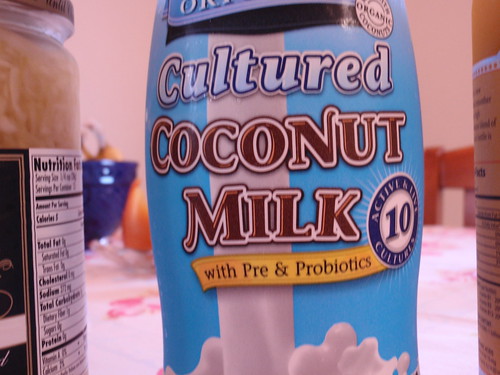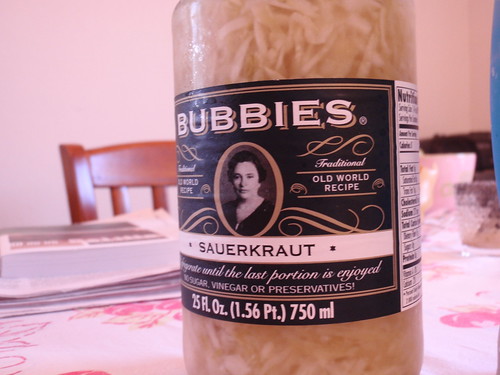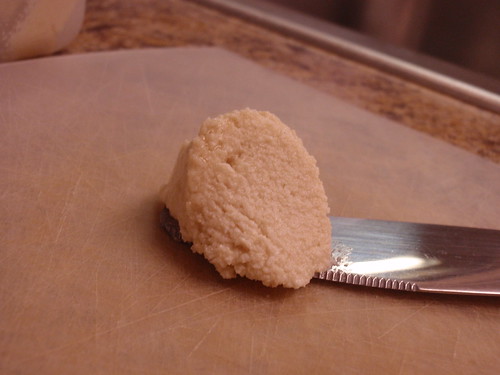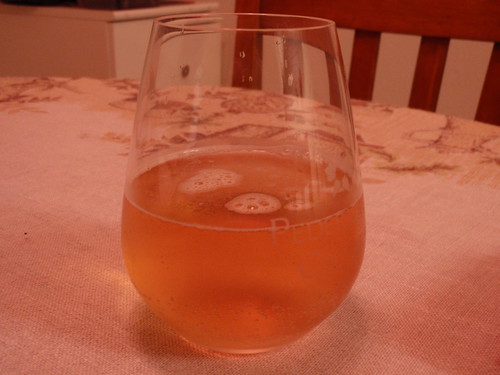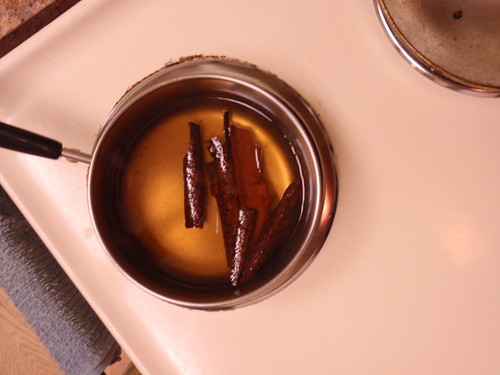Texas Fudge and fresh strawberries, a lovely combination and sweet and sour
When I was a child, I had a raging sweet tooth. You know what my favorite thing to eat was? Candy. Lot of candy. Halloween was the best day of the year, a package of Reese’s miniature peanut butter cups meant that life was good, and the very first recipes I learned to make were desserts: chocolate chip cookies, brownies from a boxed mix, even a yellow cake that had good flavor but was tough and chewy and not exactly the yellow cake of my dreams. I loved sugar. On top of that, I was a picky eater, especially when it came to meat. I hated the fatty bits, the stringy bits, the bones. It all made me shudder and tense up; you can imagine what a relief it was when I discovered canned beans, which were so tasty and satisfying and free of all the fatty-stringy-bony bits.
My parents were, unfortunately, not hippies, which meant that meals featuring meat and potatoes were frequent. I loved the potatoes; the meat, not so much. You can imagine that my parents were wringing their hands over the lack of protein in my diet, but they shouldn’t have worried: I liked eating slices of American cheese and raw hot dogs, straight from the deli drawer, which was conveniently on the bottom of the fridge, perfect for a small child to reach.
I should mention that my mother was and is a wonderful cook. Her inspiration is the memory of her grandmother’s cooking, on a farm in Kentucky. I wish I could have known that woman, my great-grandmother, and seen their farm and eaten at their table. I especially wish I could do all those things now, with a sense of what it means to eat well, to cook and eat fresh food. It wasn’t really my mom’s fault that I had a junk-food diet as a kid. I think it’s a struggle that most parents have with their kids. A child’s palate is just tuned to sugar—they can’t help it! And kids have the weirdest ideas about food. They can be downright stubborn if you don’t respect their irrationalities.
As fate and luck would have it, I have grown into an adult who does not subsist on peanut butter cups, American cheese, and hot dogs. I eat vegetables. I eat meals made with healthy ingredients. I cook! And yes, I eat dessert every day, but I can do it now in a way that feels healthy and wholesome to me. Dessert is now part of my diet, not my whole diet. It’s taken me years to get to the point where I feel like I have some control over my sweet tooth. Today I’d like to share with you some of the lessons I’ve learned along the way.
* Make sure you are getting enough protein and fat, particularly from whole foods. This one seems so obvious, but I think many of us walk around undernourished. We need food to replenish us, to provide the right calories and all the vitamins, minerals, antioxidants, and fiber to keep us humming along. As a child, I don’t think I was getting enough protein, so I turned to candy for calories as well as sugar. I didn’t like the meat my parents were offering, but I also didn’t have a lot of protein-rich alternatives. Now, knowing that protein satisfies me, I’m always conscious of whether my meal has something protein-rich, usually in the form of beans, nuts, or dairy. I also eat fat with every meal.
My advice to you: if you’re hungry, be sure to reach for nourishing foods before you think about eating snacky food, whether your snack of choice is sweet or savory.
* Be picky. And I mean really picky. I know I run the risk of sounding orthorexic here, but I do my best to turn down the junk food that I would only eat because it’s in my face, right now. For example, at work, when I go to seminars, there are usually snacks: cookies, Chex mix, soda, coffee, etc. I don’t love any of the snacks that are offered, and I know it’s all processed junk food, so I tend not to eat it. Very occasionally I’ll have a cookie or two, but that’s about it.
I make my sweet tooth wait for the good stuff: homemade goodies, high-quality chocolate bars, my favorite smoothies and sweet drinks. Everything I make at home has been tweaked to my tastebuds, so it’s really easy to pass up the packaged cookies when I know I can have homemade chocolate chip cookies after dinner with my tea. And I’d much rather do that than eat boxed cookies.
This is not to say that I never eat dessert or sweet things when I’m out and about. I love to treat myself to a cookie with my lunch at Blue Baker or to a sweetened coffee as an afternoon pick-me-up. Those indulgences happen once a week or less, so I think that keeps me from going overboard.
* Develop the rest of your palate. The person who has made me think most about the palate’s complexity is Matt. Besides being a thoughtful cook and eater, he has a very interesting set of habits when it comes to food, especially sugar. He tends not to many sweet things or even carbohydrates—he’s sort of a low-carber by default, complaining that too many carbs make him feel sleepy. But—and this is the crazy thing!—he drinks cola every day. Matt tends to buy a 20-ounce bottle of classic, full-sugar, caffeinated cola; I don’t know if he usually drinks the whole thing. Coke or Pepsi is the one sweet thing that he consumes habitually, and I think a big part of the appeal is the carbonation. Bubbles make things taste sour to us (check it out!), so a Coke ends up being this really complex taste experience: sweet, sour, bubbly in texture, and as a bonus, caffeinated. I admit, I sometimes steal sips of his pop and it does taste really good. But I’d rather have my cookie than a pop.
Matt’s preferences run the gamut: he likes pickles and sausages, cheese and vegetables. He likes meat. He loves fondue. He’d rather have wine than dessert. My point is that when it comes to the basic flavors—sweet, salty, bitter, sour, umami, and fat (yes, I believe that fat is a flavor)—Matt has taught me a lot about developing my palate beyond sweet.
* Try to find some nutritional balance. This point is an extension of the previous one. If you take the time to develop your palate, it will be easier to find nutritional balance. For example, I rarely snack on dessert foods—cookies, candy, ice cream, and whatnot—and instead, if I want something sweet, I make sure it’s got some nutritional oomph behind it. I like fruit and cheese, fruit and nuts, granola with milk or yogurt, a not-too-sweet smoothie, whole-grain toast with peanut butter and a scattering of chocolate chips, and berries with cereal and milk are some of my favorite sweet snacks. I find that I don’t have to worry about calories if I’m focused on nutrition and eating whole foods. (Well, mostly whole foods.)
* Follow Michael Pollan’s advice. And that is, “Only eat junk food that you’ve prepared at home.” I rarely buy cookies, cake, brownies, or candy from the store, with the exception of chocolate bars. This means that there is less junk food around my apartment to inspire mindless snacking, and the desserts I do have at home are made with better ingredients: more whole-grain flours, nuts, less sugar, no trans fats, no preservatives.
* Portion size (duh). When I do eat full-on dessert, I do it after a meal. That way, I’m already filled up with nutritious foods, so a small dessert is perfectly satisfying. When I’m out at a restaurant, I do like to order dessert. Splitting a restaurant dessert is my favorite way to indulge—a few bites are really all I need.
* Don’t beat yourself up about it. Life is too short to deny yourself pleasure. The trick is to figure out how to enjoy what you like without letting it derail your health.
Gretchen Rubin has an interesting blog post in which she asks, “Are you a moderator or an abstainer?” This concept may be the key to knowing how to manage a sweet tooth or any other naughty food habit. I am a moderator. I’m good at managing my sweet tooth, now that I have a more grown-up palate and a balanced diet. My sister-in-law, however, is more of an abstainer, so what works for me may not work for her. But I still think she’d agree with me about many of the points above!
Your turn, friends: how do you manage your cravings? Would you consider your palate “grown up?”

